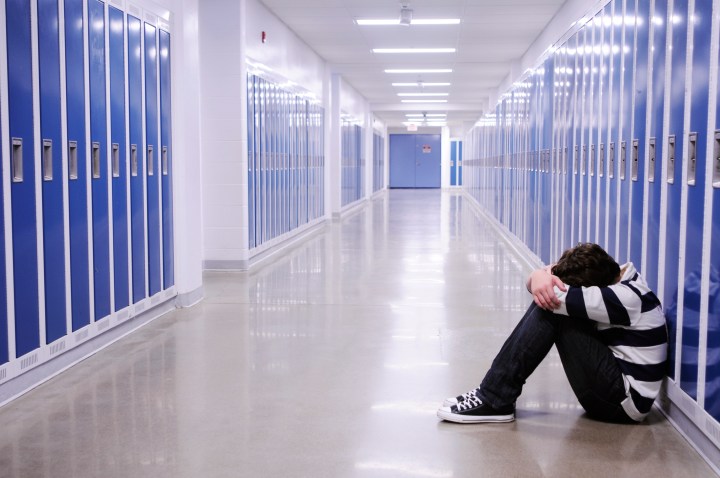
Schools struggle to address rising student homelessness

Cecilia Sirianni’s small office at Massabesic High School can sometimes get a bit messy. Piles of donated clothes and boxes of snacks fill cabinets and shelves — all for students at the rural district in York County, Maine. For more than a decade, a big part of Sirianni’s job has been to identify kids and families who are homeless and help them meet basic needs.
“So they’re dealing with all this adult stuff,” Sirianni said. “Like, again, where’s my food? I have to figure out how to get home. I have to figure out, I don’t have warm clothing. And they’re trying to just fit in and be regular kids.”
According to recent federal data from the National Center for Homeless Education, more than 1.3 million students were identified as homeless nationwide in 2017, more than double the number from a decade before. The issue is putting added pressure on schools, which are responsible for identifying those students and getting them the services they need.
On a recent morning, Sirianni sits down with a student named Savannah, who didn’t want her last name used for privacy reasons. The senior ended up without a permanent place to stay last fall, she says, when after being treated badly at a foster home, she packed her belongings in trash bags and left to stay with a friend’s family.
“I was unhappy,” Sirianni said. “And I’m a happy person. And I just got sick of being unhappy. And I needed to leave.”
But the senior has now been forced to navigate in an adult world. She’s had to figure out how to get food, healthcare and transportation. She’s spent hours working with Sirianni and other staff on complicated college and financial aid forms — made even more complicated by her uncertain housing situation.
“Like, let’s say Cecilia’s position never existed,” she said. “And I really did have to do this on my own. I remember doing it on my own, and I’m thinking, ‘What the heck?’”
Under the federal McKinney-Vento Homeless Assistance Act, school districts are required to have “liaisons” who make sure homeless students and families receive education and support. But Barbara Duffield, the executive director of SchoolHouse Connection, a non-profit advocacy group that works on youth homelessness, says, in the past, many districts haven’t been aware of the prevalence of the issue or haven’t had adequate funds and staff to focus on it.
“But to be able to have dedicated resources, such that the person can spend more of their time, that can be a challenge with limited funding,” Duffield said. She says that’s starting to change. When lawmakers reauthorized the law in 2015, they required many school districts to set aside funds and look at achievement gaps that affect homeless students.
At Massabesic High School, that help has made a difference for senior Savannah. She was accepted to the University of Southern Maine and hopes to study psychology. She says she wants to improve the system — so that other kids might have it a little bit easier.
There’s a lot happening in the world. Through it all, Marketplace is here for you.
You rely on Marketplace to break down the world’s events and tell you how it affects you in a fact-based, approachable way. We rely on your financial support to keep making that possible.
Your donation today powers the independent journalism that you rely on. For just $5/month, you can help sustain Marketplace so we can keep reporting on the things that matter to you.


















